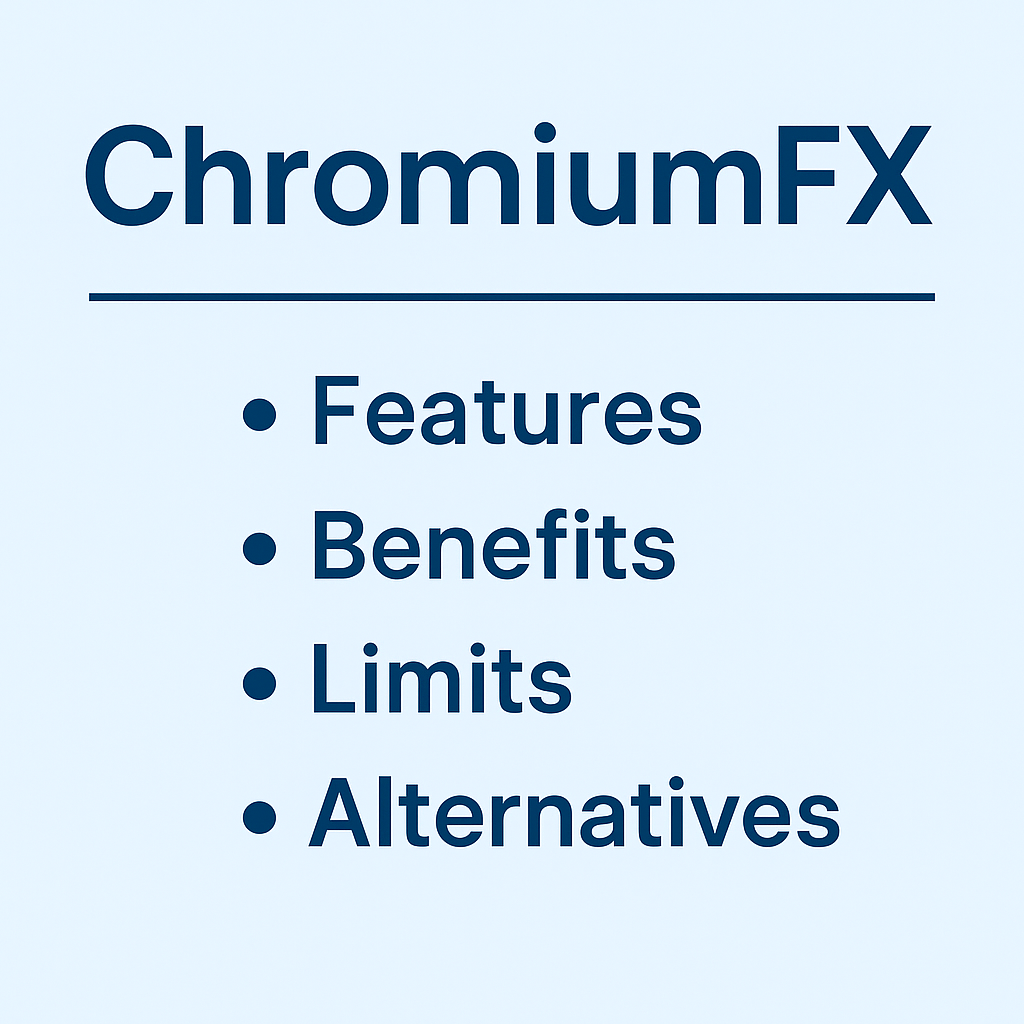Many desktop apps today need modern web features. Users want fast, interactive, and responsive designs. The Chromium Embedded Framework (CEF) helps bring a full browser into desktop software. But CEF is written in C++, which is hard to use directly in .NET.ChromiumFX solves this and it is a .NET wrapper for CEF. It lets you embed Chromium in Windows apps Anon Vault. It also adds a remoting system so your .NET code can talk to the browser easily. With ChromiumFX you can:Run JavaScript from C#, Access and change the page DOM, Use a ready to go WebBrowser control for WinForms.
This article explains ChromiumFX in simple terms: its features, use cases, limits, and how it compares with other tools.
Key Features of ChromiumFX
-
Full access to CEF API – almost everything CEF can do, you can call from .NET.
-
Transparent remoting – built in system for communication between processes.
-
DOM and V8 access – control page elements and run JavaScript from your C# code.
-
WinForms browser control – drag and drop into your project to render web pages.
-
Multiple browser windows – run more than one browser instance in the same app.
-
Custom handlers – create your own request rules, pop up logic, or new schemes.
How It Works
ChromiumFX runs in two parts:
-
Browser process – where your .NET logic lives.
-
Renderer process – where Chromium runs and JavaScript executes.
-
IPC layer – a communication bridge between the two.
This design keeps your app safe and responsive. It also makes it easier to connect C# and JavaScript.
Where ChromiumFX Is Used
-
Desktop applications
-
Add a Chromium browser to WinForms or WPF apps.
-
Show HTML5 UIs inside old .NET software.
-
-
Frameworks like Neutronium
-
Use MVVM (Model–View–ViewModel) with Vue.js or Knockout.
-
Sync data between C# objects and JavaScript automatically.
-
-
Special cases
-
Better support for AppDomain isolation compared to CefSharp.
-
Good choice for Office add ins or complex plugin systems.
-
Advantages
-
Access to DOM and JavaScript directly.
-
Strong IPC system for C# ↔ JS communication.
-
Ready to use WinForms browser control.
-
Flexible: good for custom solutions.
Limitations
-
Updates are slow – ChromiumFX is not always up to date with the latest Chromium.
-
Windows only – no official cross platform support.
-
Complex setup – you must ship CEF binaries and resources with your app.
-
Large size – including Chromium makes your app much bigger.
-
Advanced features are tricky – like session isolation or high DPI rendering.
Comparison with Other Tools
| Feature | ChromiumFX | CefSharp | Chromely |
|---|---|---|---|
| Updates | Not regular | Active, well maintained | Active, modern |
| Ease of use | Medium | High | High |
| Platform support | Windows only | Windows | Cross platform |
| DOM/JS Access | Built in remoting | Supported | Supported |
| AppDomain support | Better than CefSharp | Limited | N/A |
| Best fit | Custom IPC, special cases | General use, strong docs | Cross platform desktop |
Getting Started
Requirements
-
.NET Framework
-
ChromiumFX binaries
-
CEF runtime files
Basic Steps
-
Install ChromiumFX.
-
Copy CEF runtime files into your project.
-
Create and configure a Chromium settings object.
-
Add the WebBrowser control to your form.
-
Handle events for navigation, JavaScript calls, and page changes.
Advanced Use
-
Custom IPC – send messages between C# and JavaScript.
-
Resource handling – block or change network requests.
-
Performance tuning – reduce memory use and control background processes.
-
Debugging – use Chrome DevTools with your embedded browser.
Security Notes
When you embed Chromium, you must think about safety:
-
Enable sandboxing for renderer processes.
-
Apply Content Security Policy rules.
-
Validate SSL/TLS certificates in custom handlers.
-
Update CEF often to patch security holes.
Future of ChromiumFX
ChromiumFX has strong features but faces challenges:
-
Maintenance – without active updates, it may fall behind.
-
Competition – tools like CefSharp and Chromely are easier and better supported.
-
Trends – WebAssembly and Progressive Web Apps may reduce the need for heavy browser embedding.
Still, ChromiumFX is useful for cases where tight integration with .NET and custom IPC are required.
FAQs about ChromiumFX
1. What is ChromiumFX?
ChromiumFX is a .NET wrapper for the Chromium Embedded Framework. It lets developers add a Chromium based browser to Windows desktop apps and control it from C#.
2. What are the main features of ChromiumFX?
Key features include:
-
DOM and JavaScript access from .NET
-
Built in inter process communication
-
A ready to use WebBrowser control for WinForms
-
Support for multiple browser instances and custom request handling
3. Is ChromiumFX still maintained?
ChromiumFX does not always get updates on time. This means it may fall behind in supporting the latest Chromium versions. Developers should check the current project status before using it.
4. What platforms does ChromiumFX support?
ChromiumFX mainly supports Windows with the .NET Framework. It does not have official cross-platform support like some other frameworks.
5. How is ChromiumFX different from CefSharp?
-
ChromiumFX focuses on custom IPC and AppDomain support.
-
CefSharp is more popular, updated more often, and easier for general use.
6. Can I use ChromiumFX with WPF?
Yes. While it ships with a WinForms control, developers can integrate ChromiumFX with WPF, but it may require extra setup.
7. What are the alternatives to ChromiumFX?
The main alternatives are:
-
CefSharp – popular, well maintained, good community support.
-
Chromely – cross platform, lightweight, and simple.
-
Xilium.CefGlue – low level, raw bindings for advanced use.
8. Is ChromiumFX secure?
Security depends on how you use it. You should enable sandboxing, apply Content Security Policies, and keep CEF binaries updated. Since ChromiumFX may lag behind in updates, extra care is needed.
Conclusion
It is a strong tool for .NET developers who need to bring the full power of the Chromium browser into desktop apps and it offers useful features like DOM and JavaScript access, a ready to use WinForms control, and a reliable IPC system for communication between .NET and the browser.However, it also has limits. It is Windows only, updates are not always regular, and setup can be complex compared to newer options. For many projects, frameworks like CefSharp or Chromely may be easier to use and better supported.
In short:Choose ChromiumFX when you need deep integration and custom IPC in .NET Framework apps.Choose CefSharp or Chromely for more common, modern, or cross platform needs.

